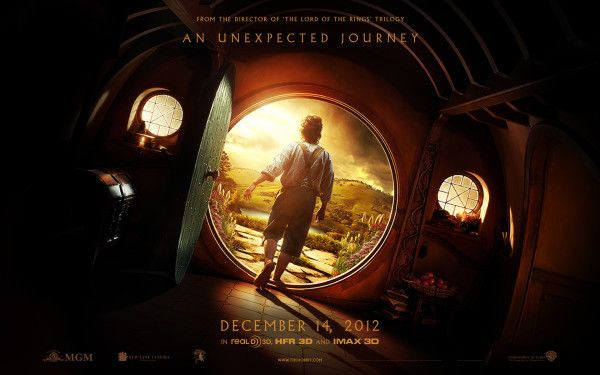
Was there really any question "The Hobbit" was poised for box office domination? After a trilogy of some of the most successful films in history, Peter Jackson's latest trip to the shire in "The Hobbit" scored the highest December weekend gross ever in its opening weekend, raking in $84.7 million, according to the Hollywood Reporter. However, overwhelming ticket sales don't always translate into critical success.
As the first reviews pour out for the J.R.R. Tolkien adaptation, audiences and critics look split over the merits of "The Hobbit." On movie review site Rottentomatoes.com the film has a current critical score of 65 percent, while audiences rate it 81 percent.
The first of three Jackson movies based on Tolkien's "The Hobbit," the movie stars Martin Freeman (Bilbo Baggins), Richard Armitage (Thorin Oakenshield), and Benedict Cumberbatch (Smaug), as well as several actors who will reprise their roles from "The Lord of the Rings," including Ian McKellen, Andy Serkis, Hugo Weaving, Cate Blanchett, Christopher Lee, Ian Holm, Elijah Wood, and Orlando Bloom.
Whether director Jackson likes it or not, the critical narrative surrounding his new film seems to center on his use of a new high-tech 48-frame-per-second frame rate, and its bulky running time. The great majority of films have been shot at 24 frames per second since the late 1920s, however, "The Hobbit" is the first film to be shot and projected in ultra-high-resolution at 48 frames per second.
The Wall Street Journal for its part loved the film's spectacular aesthetics, and the amount of detail it was able to pack into every shot, but lamented its often slow pacing,
"If not for the production's peerless visuals, the pace of its first 45 minutes or so would be soporific. Still, Martin Freeman makes an endearing Bilbo, fearful and fey yet clearly up for a call to perilous action, and if that action is slow to come, it's certainly spectacular once Bilbo leaves his cozy shire. Coming after "The Lord of the Rings" trilogy, this adaptation of the J.R.R. Tolkien children's classic suffers by comparison in the sterner shire of showmanship, and the rewards of its new-tech projection system are peculiarly mixed. On the other hand, Gollum is back in all his scrofulous glory, and several set pieces fill the screen with a wealth of detail that would have left Tolkien reeling in astonishment," said The Wall Street Journal in its review.
The Journal was intrigued by the new frame rate, but was still unsettled it overall. "This movie, projected at 48 frames per second, does not flicker; there's a smoothness, almost a creaminess, to the movement. At the same time, though, it feels less like a movie and more like the most elaborate video you've ever seen, a result that's more unsettling than likable...All of that said, what needs resaying is that the good stuff in 'The Hobbit' is amazingly good... An overlong adventure enlivened by wonders," the Journal added.
The Boston Globe questioned the need for splitting "The Hobbit" into a trilogy, saying that the film often lagged under the weight of all it wanted to accomplish.
"There will be many who may not mind, primarily the millions for whom Jackson's 'Rings' trilogy remains a defining generational experience. But it needs to be said that 'An Unexpected Journey' feels like an overproduced amble - and a familiar amble at that - next to the earlier trilogy's epic myth-making. Is it possible to have been spoiled by the rich vision of 'The Lord of the Rings' (not to mention all the films that have imitated it since) - the awe-inspiring New Zealand fantasyscapes, the muscular CGI evocation of faerie, the crashing battle lines of Orcs? 'The Hobbit' feels like the latest thing, but it never feels new," wrote the Boston Globe in its review.
The Globe was also taken back by the new frame rate, noting that the new technology often took it out of enjoying the movie.
"The resulting visuals are both remarkable and discombobulating. The film's images are astonishingly detailed, possessed of a hyperreal clarity that adds to the sense you're watching a waking dream. The downside is that "The Hobbit" no longer looks like a movie at all. It looks like a video," The Globe concluded.
Variety thought the film just didn't live up to the magic of the previous "Rings" films.
"Fulfilling just a fraction of J.R.R. Tolkien's 'There and Back Again' subtitle, 'The Hobbit' alternately rewards and abuses auds' appetite for all things Middle-earth. While Peter Jackson's prequel to "The Lord of the Rings" delivers more of what made his earlier trilogy so compelling -- colorful characters on an epic quest amid stunning New Zealand scenery -- it doesn't offer nearly enough novelty to justify the three-film, nine-hour treatment, at least on the basis of this overlong first installment, dubbed 'An Unexpected Journey.' The primary advance here is technical, as Jackson shoots in high-frame-rate 3D, an innovation that improves motion at the expense of visual elegance," wrote Variety in its review.
© 2025 Latin Times. All rights reserved. Do not reproduce without permission.




